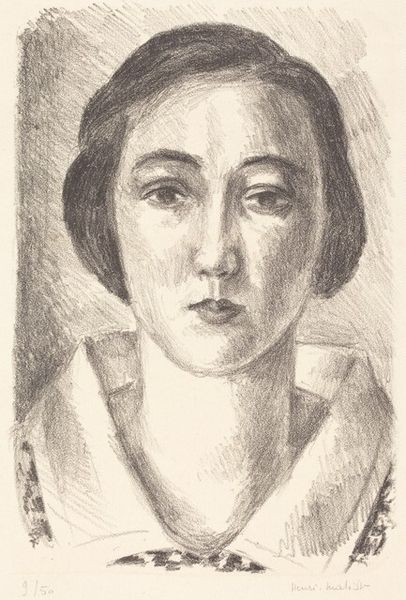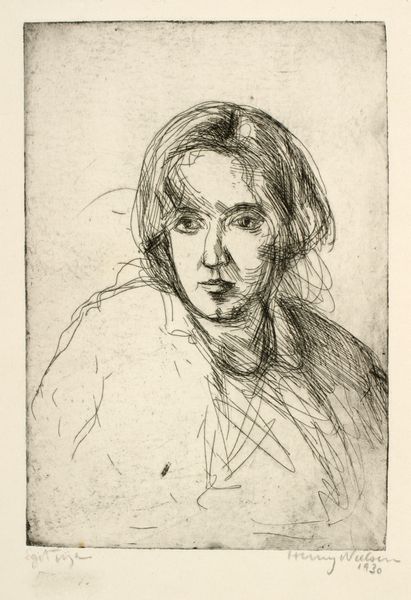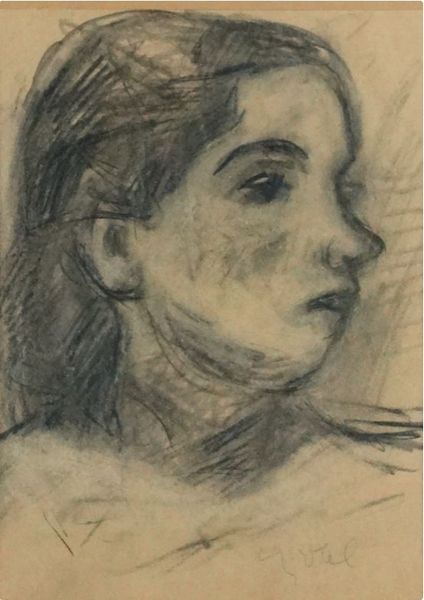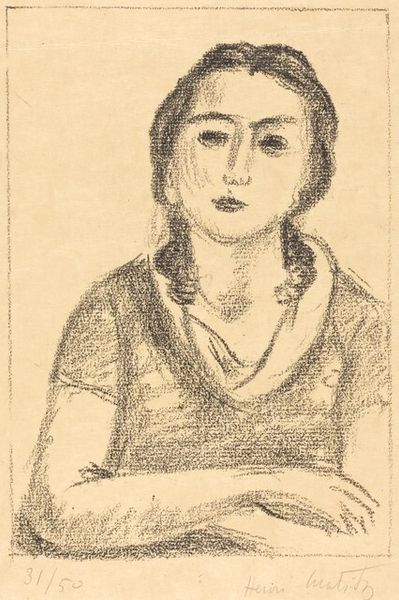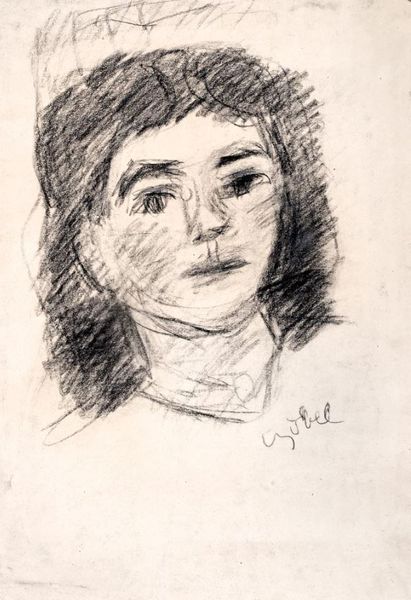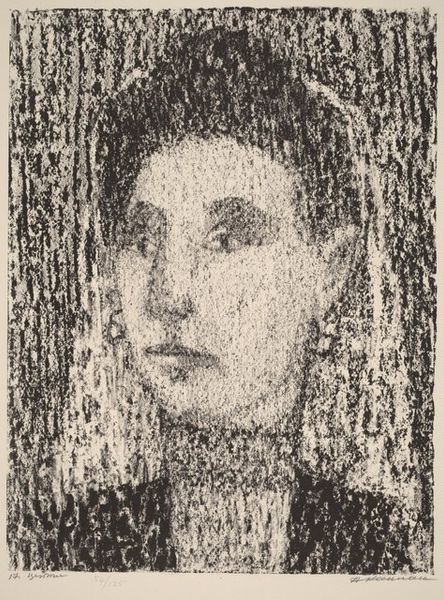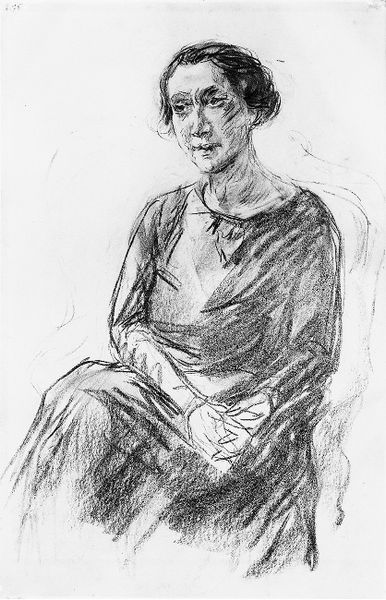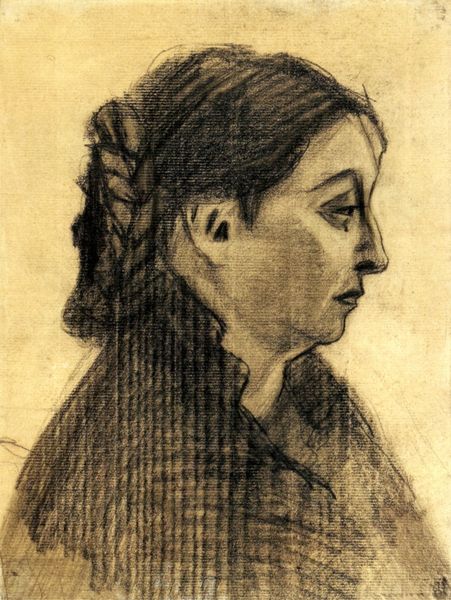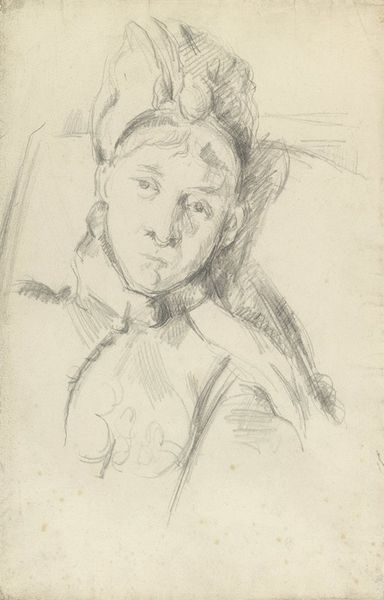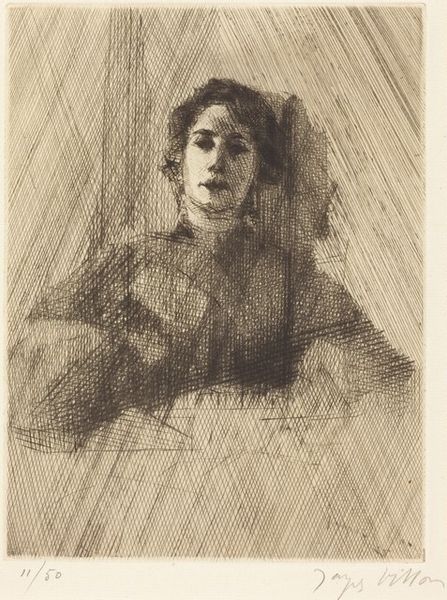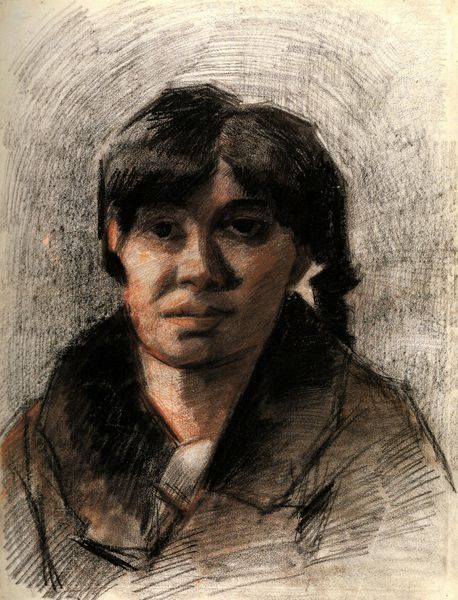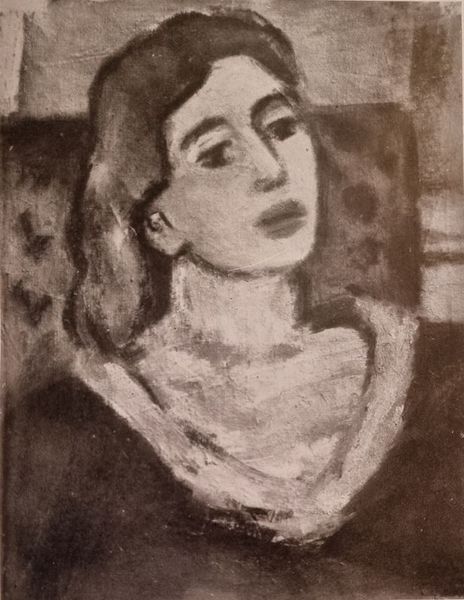
drawing, print, charcoal
#
portrait
#
pencil drawn
#
drawing
# print
#
pencil sketch
#
charcoal drawing
#
pencil drawing
#
expressionism
#
portrait drawing
#
charcoal
#
monochrome
Copyright: National Gallery of Art: CC0 1.0
Editor: Here we have Edvard Munch's "Young Prostitute," created around 1920, rendered in charcoal and pencil. The subdued palette and visible, hurried strokes give the work a raw, almost haunting, quality. What do you see in the piece, and how might we approach interpreting its power? Curator: The immediate visual impression arises from the interplay of line and shadow, wouldn’t you agree? Note how Munch deploys dense, almost frantic hatching to model the face, creating a stark contrast with the comparatively blank background. The weight and directionality of the marks lead the viewer's eye to focal points: the slight glint in the eye, the set of the jaw. Consider how this focused arrangement concentrates the emotional force. Editor: Yes, the intensity in her eyes is what first caught my attention! But why use such rough, unrefined marks for a portrait? Is it meant to evoke something beyond the subject's physical appearance? Curator: Precisely. Munch isn't aiming for mere mimetic representation, is he? Look closely at the texture – the coarse grain of the paper showing through the charcoal. What effect does this layering of mark upon material produce? One could argue that the very *making* of the image underscores the transient and unsettled condition of the subject. How else does he suggest that vulnerability? Editor: The slight asymmetry in her face? The way she is leaning forward, as if unsure or wanting to retreat? Curator: Indeed! Formally, we might view that as a calculated distortion, subtly unsettling the viewer's expectations and implicating them in the young woman's distress. So much emerges from simply observing the internal formal structure of the drawing itself! Editor: This has offered such a richer lens through which to appreciate Munch's skill in evoking emotional states via such stark formal elements! Curator: And perhaps now, we understand better the vital importance of studying the surface!
Comments
No comments
Be the first to comment and join the conversation on the ultimate creative platform.
